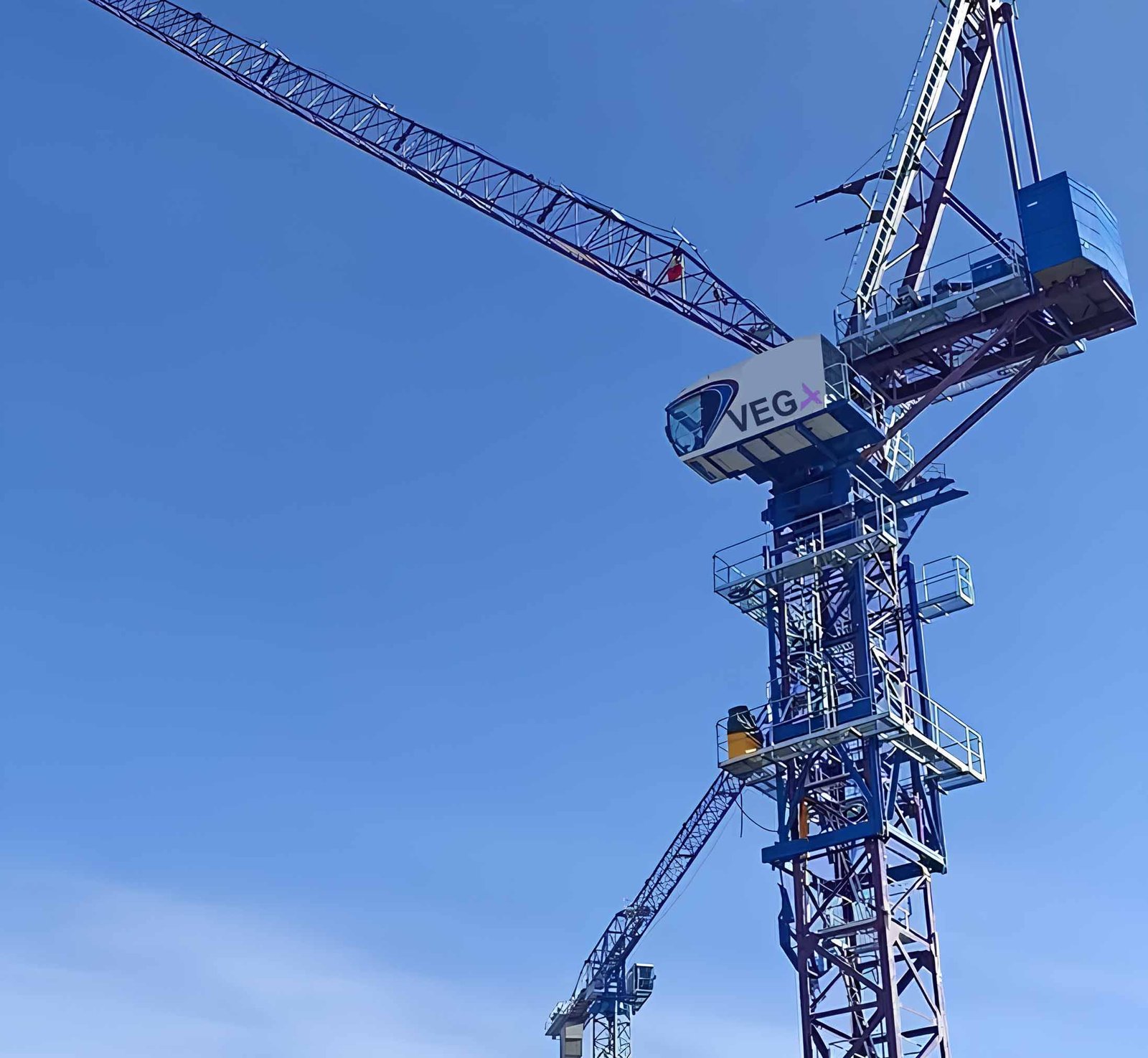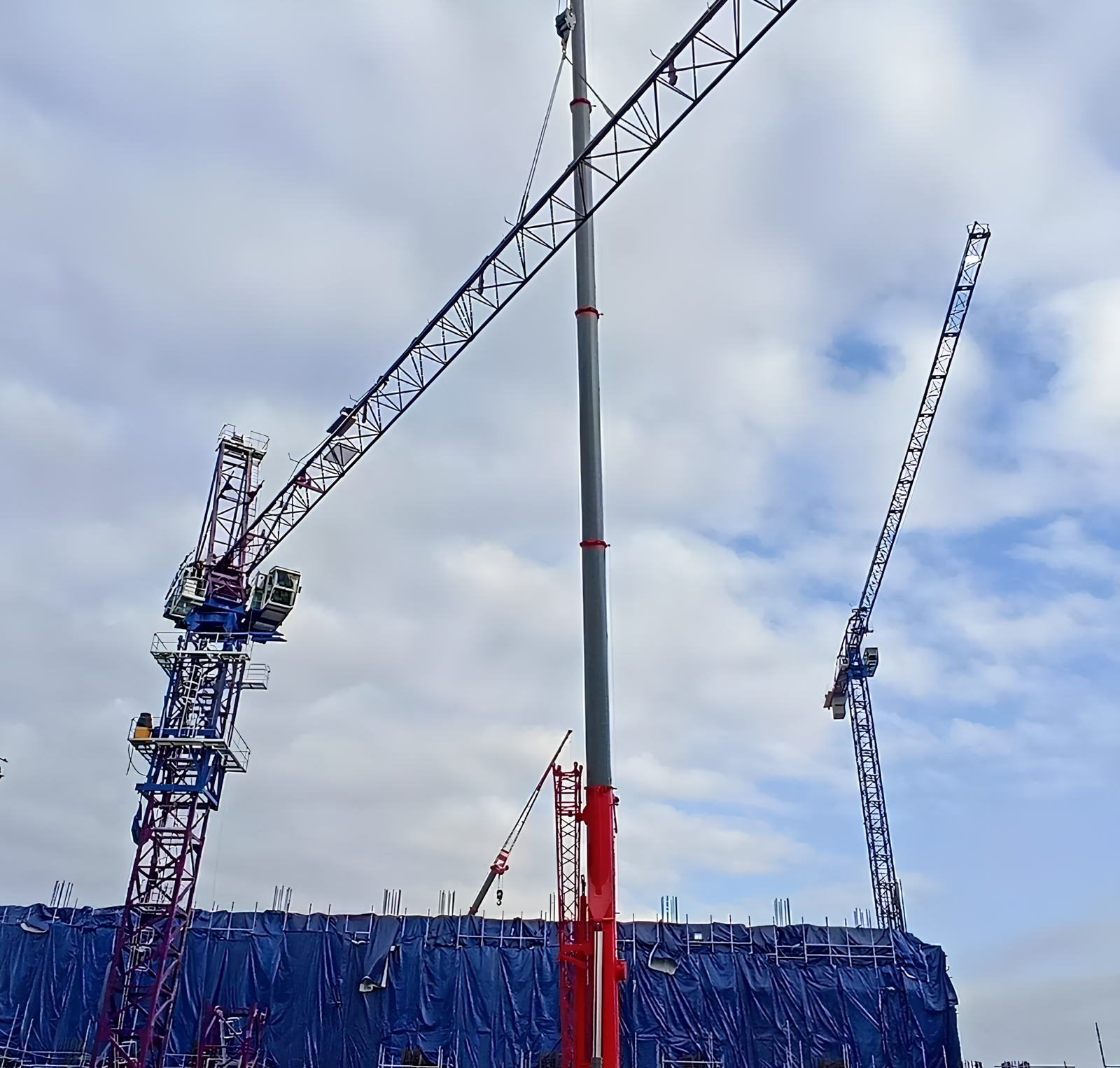
A luffing jib tower crane1 is a specific type of tower crane known for its ability to adjust the angle of its jib, or horizontal arm, through a mechanism called "luffing." This feature provides excellent flexibility and control when lifting and moving materials. Unlike conventional tower cranes, luffing jib cranes are often used in tight urban environments2 or sites with limited space. The ability to change the jib's angle allows for more precise control over the load and the crane's working radius, making it an ideal choice for specialized construction projects.
A luffing jib tower crane allows its jib to adjust in angle, providing flexibility for working in confined spaces and precise load control.
Now, let's take a deeper look into how the luffing mechanism3 works and how it sets these cranes apart from standard tower cranes.
What is the purpose of a luffing jib?
The primary purpose of a luffing jib is to give the crane operator greater control over the working radius and lifting height. By adjusting the angle of the jib, operators can lift loads at various angles without the need for repositioning the crane. This feature is particularly valuable when working in tight spaces or areas with overhead obstacles, such as in urban construction projects. The luffing mechanism allows the jib to raise or lower while the crane remains stationary, making it versatile in complex job sites.
The luffing jib allows a tower crane to adjust the jib's angle, offering more control and versatility, especially in confined spaces.

In my experience, luffing jib cranes4 are a game-changer when working on tight urban projects. I remember a project where the construction site was sandwiched between two high-rise buildings. Without the luffing feature, we'd have had to reposition the crane constantly, but the ability to adjust the jib made it possible to lift loads over obstacles without moving the crane. This saved a lot of time and reduced operational costs.
Benefits of a luffing jib:
| Feature | Benefit |
|---|---|
| Adjustable jib angle | More control over load placement |
| Compact design | Ideal for tight spaces |
| Reduced need for repositioning | Saves time and money |
What is the mechanism of luffing jib?
The luffing mechanism works by adjusting the angle of the jib using a system of hydraulic cylinders5 and cables. When the crane operator needs to change the angle of the jib, hydraulic power is used to either raise or lower it. This process is controlled by the operator from the crane's cabin, where they can adjust the angle as needed. The ability to adjust the jib's angle provides precise control over the load, making it easier to place materials in hard-to-reach or constrained spaces.
The luffing mechanism uses hydraulic cylinders to adjust the jib's angle, offering precise control over load placement.

This mechanism is highly efficient, but it also adds complexity to the crane's design. In my experience, luffing jib cranes require regular maintenance to ensure the hydraulic system operates smoothly. If the hydraulics fail or experience issues, it can halt operations and cause delays. However, when maintained properly, the mechanism works seamlessly, allowing operators to quickly adjust the jib to lift and place materials with ease.
Key components of a luffing mechanism:
| Component | Function |
|---|---|
| Hydraulic cylinders | Adjust the angle of the jib |
| Cables and ropes | Support the jib and load |
| Control system | Allows operator to control angle |
What is the difference between a tower crane and a luffing jib?
While both tower cranes and luffing jib cranes serve similar purposes, they differ in their design and functionality. The most significant difference is that a luffing jib crane has the ability to adjust the angle of its jib, which provides greater flexibility. In contrast, a standard tower crane has a fixed horizontal jib, which limits its movement. This makes a luffing jib crane ideal for projects in confined spaces or areas with obstacles. Additionally, luffing jib cranes typically have a shorter working radius compared to standard tower cranes, making them better suited for vertical lifting in dense environments.
A luffing jib crane differs from a standard tower crane by having an adjustable jib, offering more flexibility and precision in tight spaces.

In practical terms, a standard tower crane is used in wide-open spaces where the lifting path is clear, and the crane can operate with minimal constraints. On the other hand, a luffing jib crane is used in more restricted areas where precise load placement is essential. I worked on a construction site in a downtown area where a standard tower crane wouldn’t fit. The luffing jib crane allowed us to work efficiently in a very confined space, navigating obstacles with ease.
Comparison table:
| Feature | Tower Crane | Luffing Jib Tower Crane |
|---|---|---|
| Jib | Fixed | Adjustable |
| Working radius | Larger | Shorter |
| Ideal for | Open spaces | Confined spaces and obstacles |
| Precision in load placement | Moderate | High |
What is jib in tower crane?
In a tower crane, the jib is the horizontal arm that extends from the main structure and holds the hook for lifting loads. It is the part of the crane that performs most of the lifting and transporting tasks. The length of the jib varies depending on the type and model of the crane, and it is a crucial component in determining the crane's working radius and load capacity. The jib can be fixed or adjustable, depending on whether the crane is a standard tower crane or a luffing jib crane.
The jib is the horizontal arm on a tower crane that extends from the main structure, supporting the hook for lifting materials.

In my experience, the length of the jib and its configuration are significant factors in crane performance. On one large project, I worked with both a fixed jib6 and a luffing jib7 crane. The fixed jib was ideal for long-distance lifts, but the luffing jib allowed us to maneuver loads more precisely in tight spaces. Depending on the project requirements, selecting the right type of jib can make all the difference.
Types of jibs in tower cranes:
| Type of Jib | Features |
|---|---|
| Fixed Jib | Non-adjustable, extends horizontally |
| Luffing Jib | Adjustable angle for greater control |
Conclusion
A luffing jib tower crane offers more flexibility and precision than a standard tower crane due to its adjustable jib. This capability is invaluable for working in confined spaces and for projects requiring precise load placement. By understanding the mechanism and purpose of a luffing jib, construction teams can better choose the right crane for their needs, ensuring safe and efficient operations.
-
Exploring this link will provide insights into the unique benefits of luffing jib tower cranes, especially in urban and confined spaces, enhancing your project planning. ↩
-
Discover why luffing jib cranes are the go-to choice for construction in crowded urban areas, ensuring efficiency and safety in your projects. ↩
-
This resource will explain the technical workings of the luffing mechanism, offering a deeper understanding of its importance in crane operations. ↩
-
Exploring this link will provide deeper insights into how luffing jib cranes enhance efficiency and safety in tight urban construction sites, offering practical benefits and real-world applications. ↩
-
Discover the critical function of hydraulic cylinders in crane mechanisms, offering a detailed look at their contribution to precision and control in lifting operations. ↩
-
Understanding the benefits of a fixed jib can guide teams in selecting the right crane for projects that involve extensive horizontal reach. ↩
-
Exploring the advantages of a luffing jib can help construction teams make informed decisions for projects requiring precision and flexibility in tight spaces. ↩






